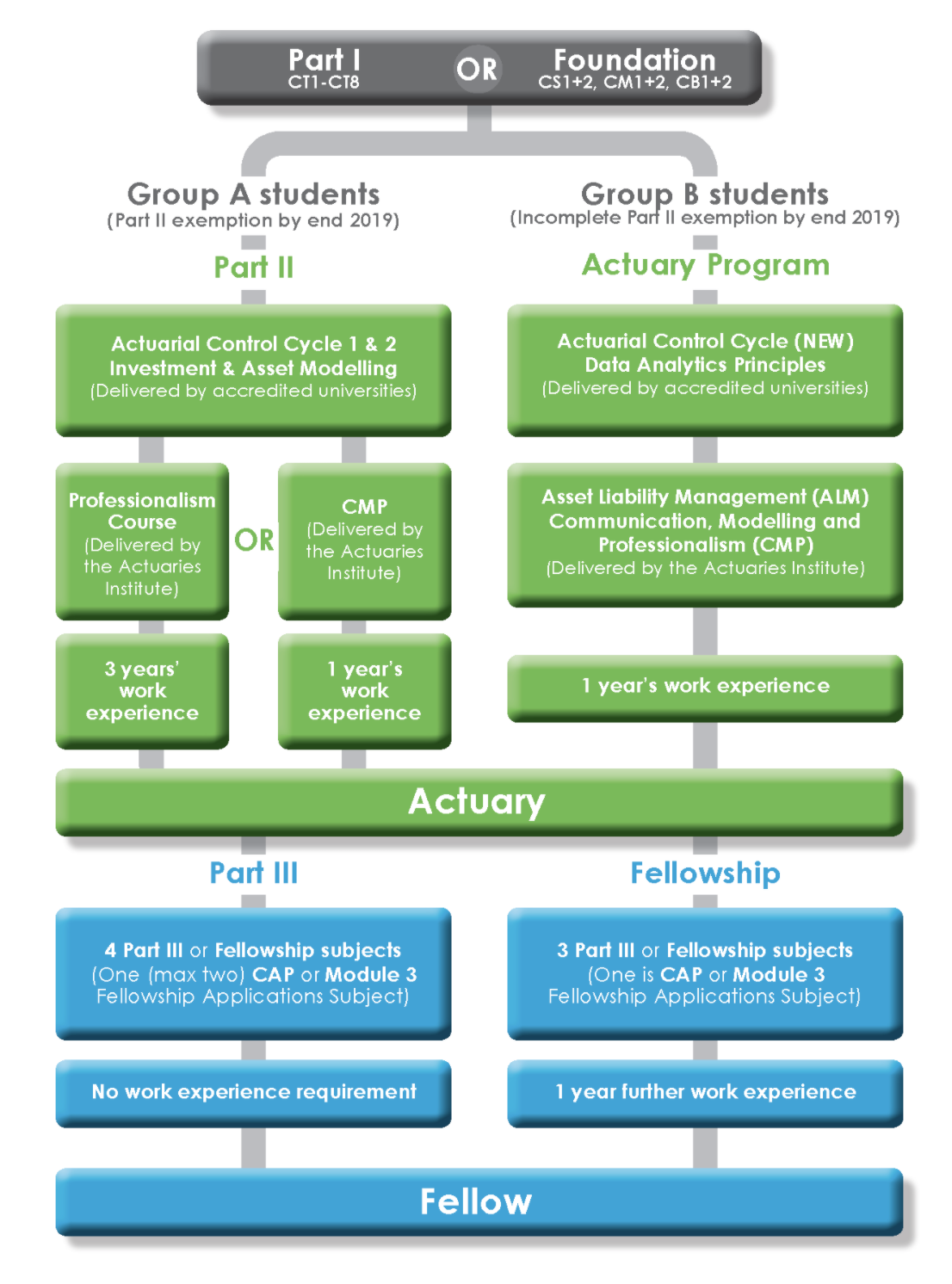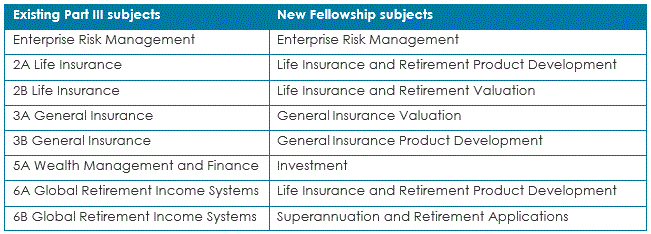Students who commenced their actuarial studies prior to 2019 may be subject to transition arrangements as the new syllabus is rolled out.
The transition arrangements seek to cater for the courses students may have already completed and the timing of the implementation of the new syllabus.
In effect, students who need to work through the transition arrangement will be categorised into one of two groups based on their completion of the old syllabus’ Part II (which consisted of Part IIA - The Actuarial Control Cycle and Part IIB - Investment and Asset Modelling).
The two groups are:
Group A: Students who obtained a full exemption from Part II by the end of 2019.
Group B: Students who do not obtain a full exemption from Part II by the end of 2019.
This includes:
- Those who attempted Part II prior to 2020 but did not gain a full exemption.
- Those commencing the new Actuary Program from 2020.
BECOMING A FELLOW
Group A
To become a Fellow, Group A students must:
- Complete all Group A Associate requirements.
- Pass four Part III or Fellowship Program subjects. You must complete either the CAP (old syllabus) or a new Module 3 Applications subject in the Fellowship Program.
Group B
To become a Fellow, Group B students need to:
- Complete the Group B Associate requirements.
- Pass three Part III or Fellowship Program subjects, one (and only one) of which must be either CAP or a new Module 3 Applications subject.
- Complete a further year of relevant work experience.
If you have questions about the Transition Arrangements and how they might apply to you, contact the Education Team.
TRANSITION STRUCTURE
The diagram below outlines the different study pathways to be taken by Group A and Group B students to become an Associate (AIAA) and then a Fellow (FIAA).

Note: Group A students can elect to become a Group B student if they gain exemption for what they have completed under the existing Part II program and complete the additional Actuary Program subjects: Communication, Modelling and Professionalism and Data Analytics Principles.
Part III and the new Fellowship Program - Credits and Transitions
The following points should be considered if you believe you may have a ‘cross-over’ between Part III courses from the old syllabus and the new Fellowship Program courses.
If you have passed an existing Part III subject, you cannot also enrol in the replacement Fellowship subject and count this towards the modules required for Fellowship.
- If you have attempted but not passed an existing Part III subject that will be closed, you may choose to transition to the most similar new Fellowship subject (see table below).
- There is no ‘replacement’ subject for 5B and therefore students who have taken 5B are not restricted as to which new Fellowship subjects they may enrol in.
- If you have studied nominated Part III subjects (see table below) you will be given specific credits to enable you to meet the prerequisite requirements for the new Fellowship subjects.
Some subjects in the new Fellowship Program have prerequisites (students must have sat the subject but not necessarily have passed the assessment), as follows:
- Life Insurance Applications (Prerequisites: Life Insurance and Retirement Valuation, and Life Insurance and Retirement Product Development).
- Retirement Applications (Prerequisite: Life Insurance and Retirement Product Development).
- General Insurance Applications (Prerequisites: General Insurance Valuation, and General Insurance Product Development).
Replacement subjects are outlined in the table below.

If you have passed one or more Part III subjects you receive a credit for each of these passes under the new Fellowship Program. These will count towards both the three (Group B) or four (Group A) subjects you need to pass in the Fellowship Program.
Part III C7A ERM Exemptions.
You may obtain an Exemption for Part III Course 7A Enterprise Risk Management if you have:
- Completed relevant university subjects by the end of 2021.
- Achieved sufficient marks in those subjects.
- Been recommended by an accredited university – currently Australian National University and University of New South Wales (please check eligibility dates with your university).
- Paid the appropriate exemption fee.